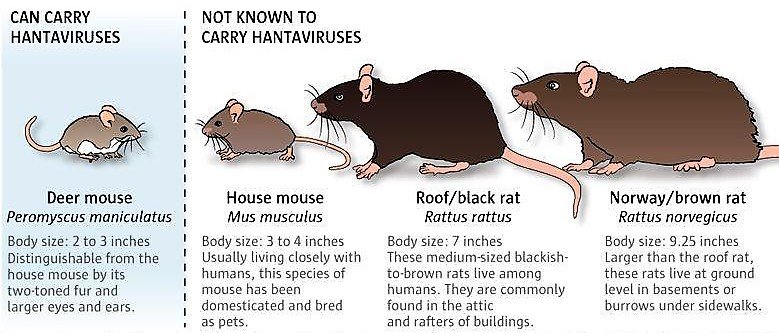
Dimitris Ilias
Living close to nature is for many people the ideal situation. After the urban explosion, it has never gone out of style for nature lovers to want to be close to the mother. For most of us living in the North Shore, one of the many appeals of our towns is exactly this proximity to open spaces, or lakes, forests and the wide green. That means coming into contact with wildlife, and mice are certainly part of it.
This article is not a fearmongering piece! Personally, I despise it when media overdo it to gain a few clicks or reads causing fear. The virus covered in this article is dangerous but rare. It is more likely to get struck by lightning than contract the disease. The chance of getting infected is 1 in 13,000,000. The main goal here is to inform our NSN readers about the proper ways to avoid infection. In Canada there have only been 109 confirmed cases of hantavirus and 27 deaths according to the Public Health Agency of Canada.
What is Hantavirus
Orthohantavirus is a genus of single-stranded, enveloped, negative-sense RNA viruses in the family Hantaviridae of the order Bunyavirales.
It causes the Hantavirus pulmonary syndrome which is a viral disease carried by wild rodents especially deer mice. They are the principal animal reservoirs of the virus in Canada. Mice themselves don’t appear to get sick from the virus. But if they are infected, they excrete the virus in their feces, urine and saliva. Hantaviruses are a group of viruses that can cause severe illness in humans.
Transmission
People can become infected with a hantavirus when they inhale virus particles from rodent urine, droppings or saliva that have been released into the air. This can happen when rodent waste is stirred up from vacuuming or sweeping or touch objects or eat food contaminated with the urine, droppings or saliva of infected rodents
The virus is also transmitted if people are bitten by a rodent infected with a hantavirus which is rare. The virus that is present in Canada does not spread through person-to-person contact. The disease has a 50% mortality rate if contracted.
How are hantaviruses spread?
People get the virus from infected mice, rats and other rodents. Different types of rodent carry different types of hantaviruses. In North America, 5 rodents are known to carry hantaviruses. These include: the deer mouse, the cotton rat, the rice rat, the white-footed mouse and the red-backed vole. The deer mouse, white-footed mouse and red-backed vole are widespread in parts of Canada. Other rodents around the world are also carriers of a variety of hantaviruses. For this reason, it is best to avoid close contact with rodents in Canada and abroad. Rodent infestation in and around the home is still the main risk for exposure to a hantavirus. But infestations and possible exposures can happen wherever rodents are present. This includes cottages, trailers and garden sheds. There are no vaccines available to prevent a hantavirus infection.
Procedure to properly clean Mouse Droppings
Since the illness is dangerous to humans when the urine or feces of an infected rodent become airborne anyone who disturbs areas of mice or mice droppings, such as when cleaning, can be at risk. Reduce your risk of illness by following this procedure:
Take a look at the
featured Local Savings
at the bottom of this page!
- Open doors and windows and allow the area to ventilate for at least 30 minutes prior to starting your clean-up. Keep out of the area while you let it ventilate.
- Wearing rubber gloves, thoroughly soak droppings, nests and dead mice with a bleach/
water solution (one-part bleach to nine parts water) or a household disinfectant. - Let the bleach water solution sit on the droppings/nests/mice, for five minutes. Do not
disturb any droppings, nests or dead mice, prior to soaking with this bleach solution (for the full five minutes). - Mop up bleach-soaked droppings, nests and/or dead mice, or pick up with paper towels, placing immediately into a plastic bag. Seal the plastic bag completely. Put sealed plastic bag directly into a garbage container with a tight-fitting lid.
- Wash your gloves before removing, and then wash your hands thoroughly (with warm soap and water).
Important notes: never vacuum or sweep droppings, nests or dead mice. This can create dust that can be inhaled. The dust may contain Hantavirus.
Individuals infected with Hantavirus generally show symptoms one or two weeks after exposure,
however, symptoms have been known to appear up to five weeks after exposure. Symptoms
resemble severe influenza, including fever, body aches, chills, and severe breathing problems.
If you have recently been in an area contaminated by mice, and have developed severe influenzalike symptoms (including difficulty breathing), it is important that you see a doctor immediately.















